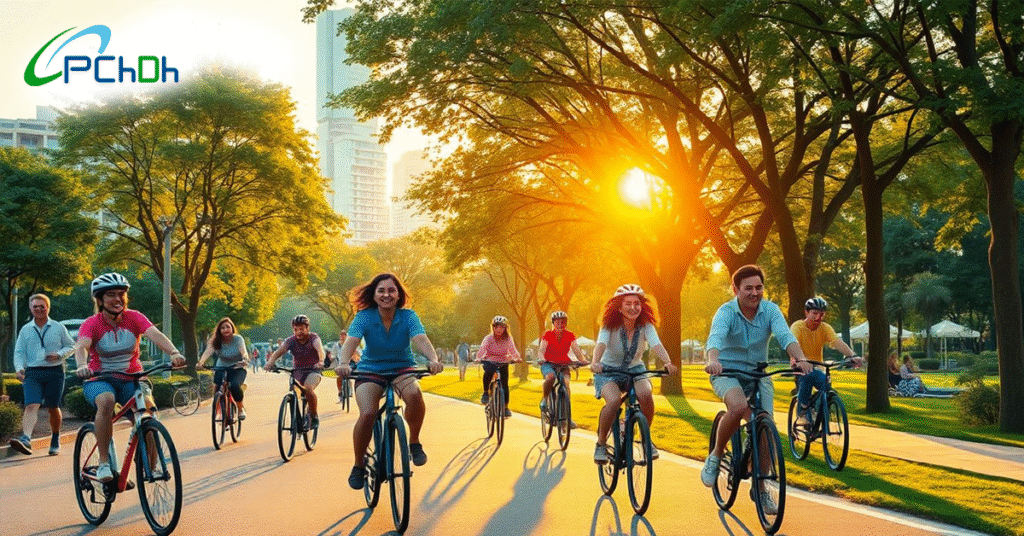Every year on June 3rd, millions of people around the world celebrate World Bicycle Day. Recognized by UNESCO in 2018, this day honors the simple act of riding a bike. More than just a fun activity, cycling has become a symbol of sustainability and healthier living. As cities grow crowded and pollution increases, bikes offer a smart way to stay active and help the planet. In this article, we’ll explore how cycling benefits personal health, supports the environment, and brings communities together.
The Origin and Significance of World Bicycle Day
History and establishment of the observance
The idea for World Bicycle Day came from the United Nations. They wanted to highlight how bicycles can improve life for many people. This day is not only a celebration of riding but also a call to promote bicycles as a sustainable way to move around. It shows how a simple bike can make a big difference in reducing pollution and traffic jams.
Global participation and awareness initiatives
Across the world, cities and organizations mark this day with events, rides, and campaigns. In Amsterdam and Copenhagen, communities host bike parades to promote cycling. Many countries team up with local governments to provide free bike rentals or safety workshops. These efforts raise awareness about cycling’s many benefits and encourage more people to hop on a bike.
Benefits of Cycling for a Healthy Future
Physical health advantages
Cycling keeps your body moving, improving your heart and lungs. Regular rides can help you manage weight and strengthen muscles. Studies show that cyclists have a lower chance of developing illnesses like diabetes or high blood pressure. It’s a simple workout that fits into everyday life.
Mental health and well-being
Riding a bike can also lift your mood. It reduces stress and clears your mind. Being outdoors and enjoying nature makes you feel happier. Research even shows that cycling can boost mental sharpness and reduce anxiety over time.
Environmental impact
Bikes are eco-friendly machines. They produce no pollution and help cut down carbon emissions. Cities with lots of cyclists usually see less smog and cleaner air. Plus, bikes reduce traffic congestion, easing the flow of city life and making streets safer.
How to Celebrate World Bicycle Day
Looking for ways to participate? Here are 5 exciting ideas to make the most of this day:
1. Join a Community Bike Ride
Many cities organize group cycling events. Check local listings for rides near you!
2. Try Bike Commuting
Replace your car or bus ride with a bicycle for a day (or longer!).
3. Donate or Repair Bikes
Support organizations that provide bikes to underprivileged communities.
4. Advocate for Bike-Friendly Policies
Push for better cycling lanes and infrastructure in your city.
5. Share Your #WorldBicycleDay Story
Post a cycling selfie or story on social media to inspire others.
Pro Tip: Use hashtags like #WorldBicycleDay, #Bike4Earth, and #CycleForChange to join the global conversation.

Promoting Cycling as a Sustainable and Inclusive Activity
Infrastructure developments and policy support
Good bike lanes, bike-sharing programs, and safe parking encourage more people to cycle. For example, Copenhagen has miles of dedicated bike paths making riding safe and easy. Some cities prioritize cycling in their urban plans, which helps more people choose bikes over cars.
Encouraging diverse participation
Cycling should be for everyone, no matter age or background. Parents can teach kids to ride safely. Seniors can enjoy gentle rides with friends. Events that include everyone help break down barriers and make cycling accessible and fun.
Corporate and community involvement
Many workplaces now promote biking as part of employee health plans. Some offer bike discounts or organize company rides. Local groups host fun rides, charity events, or safety workshops. These activities boost community spirit and make cycling a shared goal.
Practical Tips for Celebrating World Bicycle Day
Choosing the right bicycle and safety gear
Picking the right bike depends on what you need—mountain, road, or city bike. Always wear a helmet, reflective clothing, and lights for safety. Regularly check your bike’s tires and brakes. Proper maintenance keeps your ride smooth and safe.
Planning a community ride or event
Organize a friendly neighborhood ride or a themed event. Invite neighbors, friends, or coworkers. Plan a route with fun stops or educational stations about bike safety. Consider turning it into a charity ride to support local causes.
Incorporating daily cycling habits
Start small—try biking to school, work, or the store. Set a goal to ride a few times a week. Overcome safety worries by learning proper signals and rules. Cycling daily can become a healthy habit for life.
The Future of Cycling: Innovations and Trends
Technological advancements
Electric bikes, or e-bikes, are making cycling easier for everyone. They’re perfect for longer rides or hilly areas. New smart accessories, like connected lights and tracking devices, boost safety and enjoyment.
Policy and urban planning trends
Cities are designing better bike paths and safer intersections. Governments are offering incentives to buy bikes or switch from cars. Plans focus on creating cities that prioritize cycling for all ages and abilities.
Expert perspectives
Leaders in urban planning believe bikes will play a bigger role in the future of transportation. Health experts emphasize cycling’s role in fighting sedentary lifestyles. They all agree that encouraging more cycling means healthier people and cleaner cities.
FAQs About World Bicycle Day
1. Why was World Bicycle Day created?
To promote cycling as a sustainable, healthy, and inclusive mode of transport.
2. How can I participate if I don’t own a bike?
Try bike-sharing programs or borrow one from a friend!
3. Does cycling really help the environment?
Yes! If 10% of urban trips were by bike, CO2 emissions could drop by 7%.
4. What’s the best bike for beginners?
Hybrid bikes are great for casual riders—comfortable and versatile.
Conclusion
Celebrating World Bicycle Day reminds us of the many reasons to pedal forward. Bikes help us stay healthy, protect our environment, and connect communities. Whether you ride every day or just on special occasions, your participation matters. Join a local ride, advocate for better bike infrastructure, or simply enjoy a peaceful ride through your neighborhood. Let’s make biking a part of our daily lives and build a future where everyone can benefit from the freedom and benefits of cycling.


